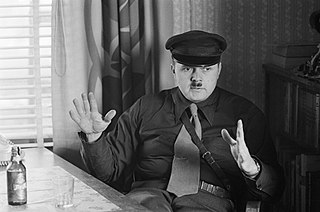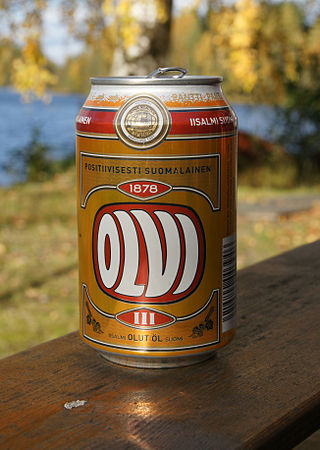
Drinking culture is the set of traditions and social behaviours that surround the consumption of alcoholic beverages as a recreational drug and social lubricant. Although alcoholic beverages and social attitudes toward drinking vary around the world, nearly every civilization has independently discovered the processes of brewing beer, fermenting wine, and distilling spirits, among other practices. Many countries have developed their own regional cultures based on unique traditions around the fermentation and consumption of alcohol, which may also be known as a beer culture, wine culture etc. after a particularly prominent type of drink.

Timo Pekka Olavi Siitoin was a Finnish neo-Nazi, occultist and a Satanist.

Teuvo Peltoniemi is a Finnish writer, journalist, researcher, educator, and eHealth developer specialized on addictions. Since the 1970s he has been contributing by research and journalism to increase public awareness in Finland for many taboo societal problems, like general speed limits, family violence, sexual abuse of children, situation of children of alcohol abusing parents, and net addiction. After retirement he now writes about social issues in his blog at Iltalehti evening paper, and in science journals and books as well as maintains two sites on the Finnish Utopian Communities.

Mauno Jokipii was a Finnish professor at the University of Jyväskylä in history specializing in World War II. He was a thorough investigator and a prolific author. Among his works were studies of the local history of Jyväskylä and the university and historical province of Satakunta.

Finland has a long history of beer dating back to the Middle Ages. The oldest still-existing commercial brewery in Finland and the other Nordic countries is Sinebrychoff, founded in 1819. The Finnish Beer Day is celebrated on 13 October to commemorate the founding of the Sinebrychoff brewery and the birth of Finnish beer. The largest Finnish brewers are Hartwall, Olvi and Sinebrychoff. Most of the beers brewed in Finland are pale lagers. As of 2022, Finland's standing is 23rd in per capita consumption of beer: Finnish people consume 70.2 litres of beer annually per capita, while the total annual consumption is 393 million litres.
Ilmari Susiluoto was a Finnish political scientist, a professor at the University of Helsinki, a senior advisor at the Foreign Ministry of Finland from 1982, an expert in Russian and Soviet history, politics and society, and an author of a number of books in this field.

Johan Verner Weckman was a wrestler who was the first Finnish Olympic gold medalist.

Jalmari Verneri Sauli was a Finnish writer and track and field athlete who competed in the 1908 Summer Olympics.

Timo Juhani Vihavainen is a Finnish historian and a professor of Russian Studies at the University of Helsinki. He has written extensively on Russian and Finnish history. Vihavainen graduated as a Master of Philosophy in 1970, a Licentiate in Philosophy in 1983, a Doctor of Philosophy degree in 1988 and a Docent in Russian history in 1992. He is a member of the Finnish Academy of Science and Letters since 2009. At the beginning of the 2000s he was among the contributors of the Kanava magazine.
Maria Lähteenmäki is a researcher of history, Jutikkala Professor at the University of Eastern Finland and Docent of Finnish and Scandinavian history at the University of Helsinki. She has produced many scientific monographs and textbooks and written a great number of articles.

Seppo Erkki Sakari Heikinheimo was a Finnish musicologist, music journalist, writer and translator.
Leif Rantala was a Finnish-Swedish linguist, and a specialist of Sami languages, cultures of history, especially of the Kola Peninsula.
Elina Haavio-Mannila is a Finnish social scientist and Professor Emerita of Sociology at the University of Helsinki where she served as the Docent of Sociology (1965–1971), Assistant Professor (1971–1992), and Professor (1992–1998). She is known for researching gender roles and gender in Finnish life. Much of the research in the latter field was done together with Osmo Kontula. In 1958, she became the first woman in Finland to earn the Doctor in Social Sciences degree.
Chileans in Finland are people from Chile residing in Finland.

In Finland, the far right was strongest in 1920–1940 when the Academic Karelia Society, Lapua Movement, Patriotic People's Movement (IKL) and Vientirauha operated in the country and had hundreds of thousands of members. In addition to these dominant far-right and fascist organizations, smaller Nazi parties operated as well.

Teo Kaarlo Snellman was a Finnish Nazi, embassy counselor, translator, and vegetarian. From 1940 to 1944, Snellman headed the Finnish National Socialist Labor Organisation. Snellman was the grandson of Johan Vilhelm Snellman. Teo considered his grandfather Johan Vilhelm and Eino Leino, Väinämöinen and Mikael Agricola to be Finland's first National Socialists.

Niilo Vilho Rauvala was a Finnish engineer and the chairman of the far-right Lalli Alliance of Finland and the Nazi Party of Finnish Labor in the 1930s and 1940s.
John Rosberg was a Finnish engineer and technical director of the Helsinki Telephone Association who was involved in far-right activities in the 1930s and 1940s.













